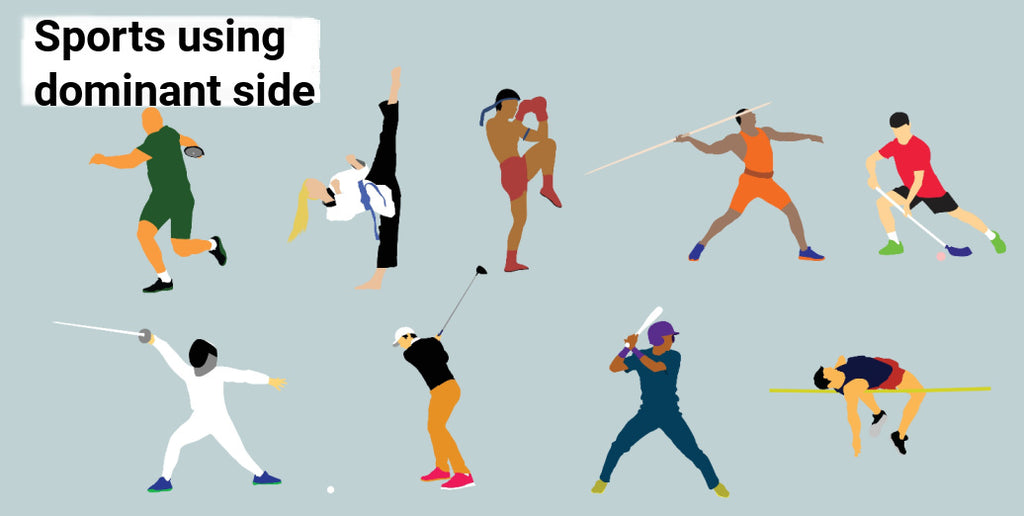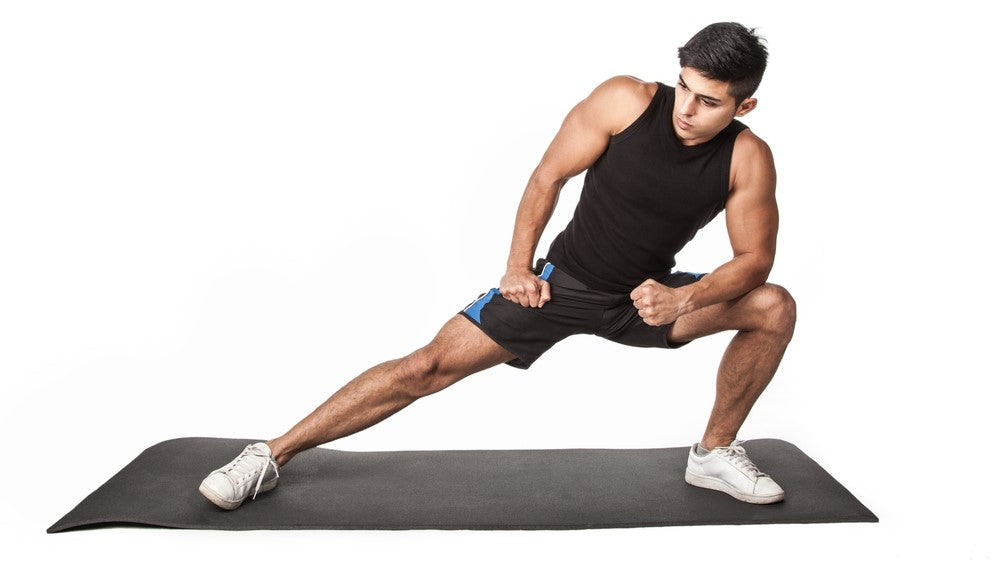Muscle imbalances discuss with variations in energy, flexibility, or muscle activation between opposing muscle teams or sides of the physique. Muscle imbalances and asymmetries are a typical subject amongst sports activities and health lovers, energy builders, bodybuilders, and others. They’ll result in discomfort, ache, and even harm if left unaddressed.
These imbalances usually happen on account of elements equivalent to poor posture, repetitive actions, and muscle weak point or tightness. Nonetheless, with the best method, it’s attainable to right these imbalances and restore correct muscle stability and performance.
On this article, we’ll discover the causes of muscle imbalances, the way to spot muscle imbalances, their potential penalties, and efficient methods for correcting them. From focused workouts and stretching to mobility, we’ll present sensible suggestions that will help you tackle muscle imbalances and promote general musculoskeletal well being.
Causes of Muscle Imbalance and Asymmetries

Muscle imbalances might be attributable to numerous elements, together with:
1. Repetitive Actions
Partaking in repetitive actions or actions in work or play that primarily use sure muscle groups whereas neglecting others can result in imbalances.
2. Overuse
An absence of selection in a exercise routine can result in an excessive amount of repetition of particular actions and overused muscle groups, which may trigger accidents and muscle imbalances.
3. Sports activities
If you happen to play golf, tennis, softball, baseball, and different sports activities that tax the muscle groups on one aspect of your physique, it will probably trigger muscle imbalances. Equally, boxers who focus most of their exercises on the upper-body prepare in a rounded-shoulder, head ahead stance, usually inflicting Higher Crossed Syndrome (UPS) that impacts the stability between the neck flexors and the decrease traps, and the chest muscle groups and higher traps.
4. Poor Posture
Extended intervals of poor posture may cause sure muscle groups to grow to be tight and others to grow to be weak, leading to imbalances.
5. Muscle Weak spot or Tightness
Pre-existing muscle weak point or tightness, usually as a result of lack of train, can contribute to imbalances.
6. Damage
An harm that impacts one muscle or muscle group can result in compensatory patterns, the place different muscle groups attempt to compensate, resulting in imbalances. An instance is placing extra stress on the best ankle due to an injured left ankle.
7. Sedentary Way of life
An absence of normal bodily exercise can contribute to muscle imbalances, as sure muscle groups could grow to be weak on account of underuse. Sitting hunched over a keyboard at a desk for a lot of hours every day over-engage the shoulder and decrease again muscle groups, and hip flexors, whereas under-engaging different muscle teams.
8. Improper Coaching Strategies
Incorrect type or approach throughout train can result in imbalances by putting extreme stress on sure muscle groups whereas underutilizing others. Working solely on the arms, shoulders, and chest muscle groups, aka “mirror muscle groups,” and neglecting the again and legs is an instance of improper coaching strategies.
9. Unbalanced Coaching Routines
Not balancing the workload of muscle groups that work the joints, such because the triceps and biceps or quads and hamstrings. That is usually attributable to doing extra pushing than pulling workouts.
10. Biomechanical Components
Particular person variations in physique construction and mechanics can predispose sure people to muscle imbalances.
11. Handedness
Utilizing the dominant hand extra usually causes minor energy variations. Research have indicated that right-handed individuals have considerably extra grip energy of their dominant hand, whereas the distinction in grip energy in lefties was minimal. Researchers decided that left-handed individuals, residing in a principally right-handed world,
have tailored to utilizing each palms.
Addressing muscle imbalances usually includes a mixture of stretching, strengthening, and corrective workouts to revive stability and forestall additional points.
What are the Indicators of Muscle Imbalances?
Indicators of muscle imbalances can fluctuate relying on the precise imbalance and its severity. Typically it may be delicate at first, however the sooner it’s addressed, the better it will likely be to rectify the imbalance.
Usually, indicators like these happen throughout exercises or sports activities actions:
— Ache or Discomfort: Power ache or discomfort, particularly in particular muscle groups or joints, can point out muscle imbalances.
— Restricted Vary of Movement: Problem shifting a joint by means of its full vary of movement could also be an indication of muscle tightness or weak point.
— Poor Posture: Imbalances in muscle groups that assist posture can result in slouching, uneven shoulders, or different postural points.
— Muscle Weak spot: Noticeable weak point in sure muscle groups, particularly in comparison with the muscle energy of their counterparts, can point out an imbalance.
— Muscle Tightness: Persistent tightness or stiffness in sure muscle groups, even after stretching, could be a signal of imbalance.
— Fatigue: Muscle groups which can be overworked on account of imbalances could fatigue extra shortly than balanced muscle groups.
— Joint Instability: Imbalances can result in joint instability, growing the danger of harm throughout bodily exercise.
— Asymmetry: Seen variations in muscle dimension or tone between the left and proper sides of the physique could point out imbalances.
It is vital to seek the advice of a healthcare or health skilled for an correct evaluation should you suspect you’ve got muscle imbalances, as they will present steerage on the way to take a look at for muscle imbalances, and implement probably the most acceptable corrective measures.

Examples of Muscle Imbalances and Asymmetries
Frequent examples of muscle imbalances and asymmetries embrace:
-
Quadriceps and Hamstrings:
Quadriceps dominance
happens when the quadriceps (entrance thigh muscle groups) are stronger when in comparison with weaker hamstrings (again thigh muscle groups), which may result in knee points on account of imbalances within the knee joint.
-
Biceps and Triceps: Imbalances between the biceps (the entrance of the higher arm) and triceps (the again of the higher arm) can happen on account of overtraining or favoring one muscle group over the opposite. This could result in points like elbow ache or restricted vary of movement.
-
Chest and Again: Weak spot or imbalance between the chest muscle groups (pectorals) and the muscle groups of the higher again (such because the rhomboids and traps) can contribute to poor posture and shoulder points.
-
Higher Crossed Syndrome: Weak spot within the deep neck flexors and decrease traps, mixed with tightness within the higher traps and chest muscle groups, resulting in ahead head posture and rounded shoulders.
-
Decrease Crossed Syndrome: Weak spot within the stomach and gluteal muscle groups, mixed with tightness within the hip flexors and decrease again muscle groups, resulting in an anterior pelvic tilt.
-
Hip Flexors and Glutes:
Tight hip flexors usually happen in people who sit for lengthy intervals, resulting in weak glutes and hamstrings and an elevated threat of decrease again ache and weak posture.
-
Weak Core: Weak spot within the core muscle groups (abdominals, obliques, decrease again) can result in poor posture, decrease again ache, and lowered stability.
-
Dominant Aspect Imbalance: One aspect of the physique being stronger or extra coordinated than the opposite, which may have an effect on stability and general efficiency.
-
Tight Calves: Tightness within the calf muscle groups, usually on account of carrying excessive heels or insufficient stretching, which may result in foot, ankle, and knee points.
-
Shoulder Imbalances: Weak spot within the rotator cuff muscle groups or imbalance between the muscle groups that stabilize the shoulder blade (scapula), resulting in shoulder ache and instability.
-
Weak Glutes: Weak spot within the glute muscle groups, significantly the gluteus medius, can contribute to hip and knee points and have an effect on general decrease physique energy and stability.
-
Calves: Imbalances between the gastrocnemius and soleus muscle groups within the calf can have an effect on ankle stability and motion.
-
Abdominals and Decrease Again: Weak spot within the stomach muscle groups mixed with tightness or weak point within the decrease again muscle groups can result in imbalances within the core, impacting posture and stability.
-
Shoulders: Imbalances between the muscle groups that stabilize the shoulder blade (scapula) and the muscle groups that transfer the shoulder (deltoids) can result in shoulder instability and ache.
Addressing muscle asymmetry usually includes focused workouts to strengthen weaker muscle groups, stretch tight muscle groups, and enhance general muscle stability and performance. Consulting with a health skilled or healthcare supplier may help decide the perfect method for addressing muscle asymmetry.
Potential Penalties of Muscle Imbalances?
Muscle imbalances can have a number of adverse results on the physique, together with:
— Elevated Danger of Damage: Muscle groups which can be considerably weaker or tighter than their counterparts could not present ample assist and stability, growing the danger of strains, sprains, and different accidents.
— Poor Posture: Imbalances in muscle groups that assist posture can result in poor alignment, which may trigger discomfort, ache, and additional imbalance.
— Muscle Compensation: When one muscle is weaker or tighter than it ought to be, different muscle groups could compensate by working more durable, resulting in overuse accidents and additional imbalances.
— Restricted Vary of Movement: Imbalances can prohibit the vary of movement in joints, affecting flexibility and mobility.
— Decreased Efficiency: Muscle imbalances can negatively affect athletic efficiency, as they will have an effect on coordination, energy, and energy output.
— Power Ache: Imbalances can contribute to continual ache in areas such because the again, hips, knees, and shoulders.
— Joint Dysfunction: Imbalances can result in joint dysfunction, as uneven forces could also be utilized to joints, resulting in put on and tear over time.
— Decreased High quality of Life: Muscle imbalances can affect every day actions and general high quality of life, particularly in the event that they end in continual ache or restricted mobility.
Addressing muscle imbalances by means of corrective workouts, stretching, and correct motion patterns is vital to stop these adverse results and preserve optimum musculoskeletal well being.
The best way to Forestall Muscle Imbalances?
Stopping muscle imbalances includes a mixture of correct train, stretching, and way of life habits.
Listed here are some suggestions to assist forestall muscle imbalances:
— Balanced Train Program: Incorporate numerous workouts that concentrate on completely different muscle teams to make sure general muscle stability and energy. Embrace bilateral workouts to work either side of the physique, and do the identical variety of reps and units for unilateral workouts.
— Correct Kind: Use correct type and approach throughout workouts to stop overuse of sure muscle groups and cut back the danger of harm.
— Stretching: Usually stretch all main muscle teams to take care of flexibility and forestall muscle groups from turning into tight and imbalanced.
— Rise up and transfer: If you happen to spend many hours behind a desk, rise up and transfer about or do desk-exercises for a couple of minutes each hour.
— Posture Consciousness: Keep good posture all through the day, whereas sitting, standing, and strolling to stop imbalances within the muscle groups that assist posture.
— Cross-Coaching: Have interaction in actions that use completely different muscle teams to stop overuse and promote general muscle stability.
— Relaxation and Restoration: Enable ample
relaxation and restoration time between exercises to stop overuse accidents and muscle fatigue.
— Hydration and Vitamin: Keep
hydrated and preserve a balanced food regimen to assist muscle well being and performance.
— Common Bodily Exercise: Keep lively all through the day to stop muscle stiffness and preserve general muscle well being.
— Seek the advice of a Skilled: If you happen to’re uncertain about your muscle stability or the way to forestall imbalances, seek the advice of a health skilled or healthcare supplier for steerage.
By incorporating the following tips into your routine, you possibly can assist forestall muscle imbalances and preserve optimum musculoskeletal well being.
The best way to Appropriate Muscle Imbalance
The reply could also be easy: work the weaker muscle groups extra. Nonetheless, the answer could also be extra difficult than merely growing reps and units.
For instance, in case your higher physique is noticeably stronger than your decrease physique, merely including extra intense decrease physique exercises may not be the reply.
You may need to tone down your higher physique coaching whereas amping up your leg work to catch up and enhance the general stability of energy and aesthetics.
Attain out to an authorized private coach or bodily therapist that will help you determine the imbalanced or asymmetrical muscle groups. They’ll design a specialization exercise routine to repair muscle imbalances.
Such a routine usually includes unilateral workouts and stretching. Each facilitating extra intense exercises for one muscle group, whereas reducing down on exercising of others.
Bilateral and Unilateral Workout routines
Whereas centered unilateral workouts can strengthen weaker muscle groups, care should be taken to not enable the stronger muscle groups to weaken within the course of.
Let your private coach watch your motion patterns to determine type or approach errors that may contribute to muscle imbalances. Corrective exercises can then be designed to repair them.

Together with the next push and pull workouts in a exercise routine will cowl all the basic actions and activate all the key and minor muscle teams.
— Horizontal Pull, equivalent to inverted rows.
— Vertical Pull, equivalent to pull-ups
— Horizontal Push, equivalent to push-ups
— Vertical Push, equivalent to dips
— Hinge actions, equivalent to Romanian deadlifts or kettlebell swings
— Squat workouts, equivalent to goblet squats

From there, muscle imbalances and asymmetries might be addressed underneath the steerage of a CPT. Options usually contain unilateral coaching that works just one aspect of the physique, which permits focussing on weaker muscle groups whereas sustaining stronger muscle groups.
The next are particular examples of workouts which can be efficient in fixing muscle imbalances:
— Single-leg Romanian deadlifts
— Dumbbell bench press
— Dumbbell curls
— Overhead kettlebell press
— Lunges
— Bulgarian break up squats
PNF Stretching
Proprioceptive neuromuscular facilitation stretching (PNF) is a type of stretching that goals to enhance flexibility and vary of movement in muscle groups. It includes a mixture of stretching and contracting muscle groups.
There are a number of widespread PNF stretching strategies, together with the hold-relax approach, the contract-relax approach, and the hold-relax-contract approach. These strategies are designed to focus on particular muscle teams and may help enhance flexibility and imbalances extra successfully than static stretching alone.
It is very important carry out PNF stretching safely and underneath the steerage of a certified skilled to keep away from harm.

AIS Stretching
Lively Remoted Stretching (AIS) is a stretching approach that includes isolating particular muscle groups or muscle teams and holding stretches for only one–2 seconds.
A key precept of AIS is the idea of reciprocal inhibition, the place the muscle being stretched is relaxed whereas its antagonist (opposing muscle) is engaged. It’s usually used along side different types of train and remedy to handle muscle imbalances.
Keep in mind, consistency is vital with regards to correcting muscle imbalances. It might take time to see vital enhancements, so be affected person and keep dedicated to your corrective train routine.
For the perfect outcomes, addressing muscular imbalances ought to be accomplished underneath the steerage of licensed private trainers or bodily therapists.
In a Nutshell
Addressing muscle imbalances is important for sustaining optimum bodily well being and stopping harm. By incorporating focused workouts, stretching, and way of life changes into your routine, you possibly can right imbalances and restore correct muscle stability and performance.
Muscle imbalances are regular, and the muse of correcting muscle imbalances is relaxation and restoration after coaching. For that you might want to sleep effectively. As a result of sleep is the place your physique repairs itself.
If you happen to’re in want a great nights sleep, add
RESTED-AF to your nightly routine!

